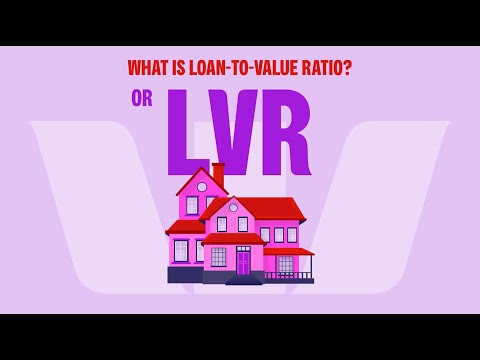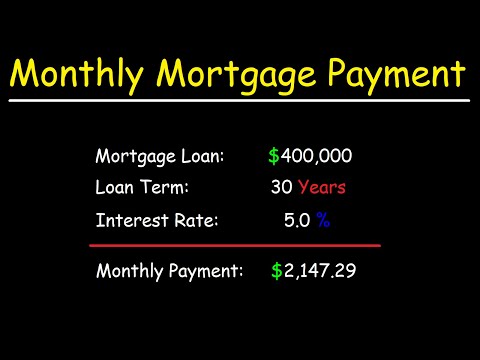Unraveling the Significance of Loan to Value (LTV) Ratio
Let’s dive headfirst into the nitty-gritty of the loan to value (LTV) concept, dear reader. Like the cornerstone that holds a building steady, the LTV is a critical metric in the world of mortgage borrowing. It’s that magical number—expressed as a percentage—that banks and mortgage lenders ogle at like it’s the coveted last slice of pizza at a party.
Why’s it so darn important? Well, the LTV affects the green you’ll have to fork out in interest rates, not to mention borrowing limits, and whether you’ll have to endure the added cost of mortgage insurance. And get this, gang: regulatory changes in 2024 have made LTV calculations as important as your GPS on a road trip into unfamiliar territory. So buckle up!

Calculating LTV: A Key Step in Property Financing
So, you want to calculate LTV manually? It’s as easy as pie. Take your current loan balance—peek at your monthly statement or check your online account—then divide it by your home’s appraised value. Give that sum a little twirl, multiply by 100, and voila, you’ve got your LTV percentage.
Now, if you’re thinking there’s gotta be a more straightforward way—there is—the loan to value calculator is your best friend in this journey. But remember, your property’s valuation is no constant creature; it strides in waves, affected by market trends and other factors that can send it on a rollercoaster ride.

| **Factor** | **Description** | **Effect on LTV** | **Guideline Values** |
|---|---|---|---|
| Current Loan Balance | The remaining amount of money you owe on your mortgage. | This is the numerator in the LTV ratio calculation. Higher balances result in a higher LTV. | – |
| Home’s Appraised Value | The current market value of your home as determined by a professional appraisal. | This is the denominator in the LTV ratio. Higher home values result in a lower LTV. | – |
| Original Loan Amount | The initial amount borrowed to purchase the home. | A starting point for the LTV ratio; however, the current balance is what affects the present LTV. | – |
| Down Payment | The amount of money paid upfront for the home purchase. | Larger down payments result in lower initial LTV ratios. | Typically 20% of the home value is recommended. |
| Loan-to-Value (LTV) Ratio | The percentage of the mortgage amount to the home’s appraised value. | A key parameter to understand the level of indebtedness compared to the asset value. | Ideal LTV is 80% or lower for better loan terms. |
| Refinancing Considerations | When considering refinancing, the LTV ratio helps determine eligibility and terms. | High LTV can limit refinancing options or result in higher interest rates. Low LTV can lead to better rates. | LTV below 80% can avoid private mortgage insurance (PMI). |
| Home Equity | The portion of the home’s value that the homeowner actually owns. | Home equity increases as LTV decreases. Positive home equity is crucial for additional financing options or selling the home. | Higher equity (lower LTV) provides financial flexibility. |
| Good LTV Ratio for Mortgage | A ratio that lenders prefer when considering loan approvals and terms. | Lower LTV is considered good by lenders and can lead to preferred loans and better rates. | 80% or lower is generally considered good. |
| Impact of Real Estate Market | Changes in property value over time affecting your home’s appraised value. | A rising market can lower your LTV, whereas a falling market can increase it. | – |
| PMI Requirement | Private Mortgage Insurance that lenders require usually when LTV is above 80%. | If the initial LTV is above 80%, PMI is typically required until the LTV drops below 78% automatically or 80% upon request. | Avoiding PMI can save borrowers money on their mortgage bill. |
The Top 5 Loan to Value Calculators of the Year
1. SmartProperty – The Intelligent Choice for Quick LTV Results
You’ve got dreams to chase, which means you need swift and smart answers—and that’s where SmartProperty comes in. Imagine a calculator that doesn’t just spit out numbers but does it faster than you can say “mortgage”. Users are praising it, claiming it turned complexities into cakewalks. Don’t take my word for it, though; the rave reviews and glowing case studies speak volumes.
2. EquityMaster – Advanced Analytics for the Savvy Borrower
Now, for those mortgage connoisseurs out there seeking more than just a number—meet EquityMaster. This isn’t just a loan to value calculator; it’s a powerhouse of advanced analytics. Its reports are gold mines of information, and when it comes to user experience, it’s like comparing a luxury sedan to a beat-up old clunker.
3. QuickRatio – The Rapid LTV Estimator for Fast Decisions
Speaking of fast, we can’t gloss over QuickRatio. This tool doesn’t just operate in real-time, it’s built for it. Imagine needing a quick LTV check before that life-changing property auction—you glance at QuickRatio, and bam, you’re armed with the intel you need. It’s user satisfaction on nitrous.
4. HomeWorth – Blending Accuracy with User-Friendly Design
It’s not just about the numbers; it’s about the experience. And that’s the gospel according to HomeWorth. They’ve married pinpoint accuracy with a user interface that’s as inviting as a freshly-baked pie on a windowsill. Dive into an expert review if you’re craving those details, but I’ll tell you, the consensus is clear—HomeWorth gets the people’s nod.
5. ValuCalc – Your Personalized LTV Adviser
Last but not least, ValuCalc takes the term “customized experience” to new heights. This is like having a tailor for your mortgage needs—everything’s cut to fit you and you alone. It’s bolstered by service integrations that encompass far more than just LTV. It’s the pick of the litter for folks who appreciate a personal touch.

In-Depth Loan to Value Calculator Analysis: Comparing the Market Leaders
So how do these captains of calculation stack up against one another? Picture a matrix with our fab five—SmartProperty, EquityMaster, QuickRatio, HomeWorth, ValuCalc—all lined up. Each championing LTV in their own merits; but when the rubber meets the road, it’s about understanding the benchmarks these calculators use for their magic.
Interviews with flannel-suited financial analysts and bespectacled user experience gurus paint a colorful picture of the landscape. Let’s move on with more than just chit-chat; let’s talk facts and finesse.

Nuances and Updates in Loan to Value Calculations for 2024
As we navigate through 2024, let me guide you through some spicy updates. Appraisal methods are now more Iron Chef than bubblegum and duct tape, affecting that LTV number more than ever. Plus, legislative juggernauts have swung their gavels, impacting who gets their foot in the mortgage door. And, oh boy, don’t even get me started on the tech—artificial intelligence isn’t just for sci-fi flicks anymore; it’s reshaping how LTV gets crunched down to the last decimal.

Adopting the Right Loan to Value Calculator for Various User Needs
So, how do you know which loan to value calculator is your knight in shining armor? It’s all about the fit. Like choosing the right pair of shoes for a marathon, you need a calculator that aligns with your situation. If you’re the analytical type, maybe EquityMaster is your jam. On the fast lane? QuickRatio might be your speed.
And you, the savvy planner—you’re looking to make LTV a cog in your grand financial scheme. Pay heed; not every LTV calculator plays nice with others. You need one that will lock arms with your other financial tools like a beloved dance partner.
Integrating Loan to Value Calculators with Other Financial Tools
Imagine a web of financial tools, all talking to each other like old friends. That’s the ideal scenario when slotting an LTV calculator into your financial toolkit. Why settle for isolated info when you can have a symphony of data points harmonizing to guide your mortgage decisions? Imagine hitting the sweet spot with your mortgage calculations, all while your LTV calculator winks at the rest of your financial ensemble, making sure everyone’s on the same page.
The Future Landscape of Loan to Value Estimation
Predicting the future is often a fool’s errand, but when it comes to LTV calculators, we’re on solid ground. The crystal ball shows an evolution, with tools that not only calculate but educate, adapt, and predict. AI and big data aren’t knocking on the door anymore; they’ve let themselves in and are about to raid the fridge. And that, my friends, is something to watch for.
Conclusion: Leveraging the Best LTV Calculator for Your Mortgage Journey
Alright, gang, let’s put a bow on this. We’ve paraded through the who’s who of loan to value calculators. Each one has the muscle to beef up your mortgage strategy. But like a bespoke suit, the choice boils down to your personal quest.
Flipping the pages back, these tools have come a long way and, oh boy, they’re only revving up. So, eyes wide, ears perked, and mind open—staying informed and adaptable is not just clever; it’s a necessity in the morphing mortgage landscape. Ready to crunch some numbers?
Uncover the Mysteries of Your Mortgage With the Best Loan to Value Calculator
Hey there, house hunters and refinancing gurus! If you’re itching to get the lowdown on your property deets without getting into a mathematical muddle, then a top-notch loan to value calculator is your new BFF. Let’s dive into some fun facts, shall we?
The Calculation Sensation: A Sneaky Peek into a Loan to Value Calculator
Who would have thought that a simple equation could be the gatekeeper to understanding how much lenders might love ya? Or not. This nifty tool is like a fortune teller for your mortgage, predicting your financial standing faster than you can say “show me the money!”
The real magic happens when we get into the nitty-gritty of What Is loan To value? It’s like uncovering the secret ratio that can either make or break your dream of painting the front door to your new crib that quirky shade of purple. So, buckle up and let’s get calculating!
The Celebrity Connection – More Than Just Numbers
Believe it or not, talking about loan to value calculators can be as buzzworthy as catching a glimpse of Margot Robbie Nudes. Seems off-topic? Well, the world might be abuzz about celeb scandals, but knowing your LTV ratio is all about getting the inside scoop on your financial status. It’s celebrity-level important in the lending world!
Don’t Play “Challenge” With Your Equity
Taking risks might be thrilling—fans of the Tiktok blackout challenge know a bit about that—but when it comes to your mortgage, you want the sure thing, not a gamble. Using a rock-solid loan to value calculator ensures that you’re keeping your feet on the ground and your equity safe. No fainting necessary!
Time Check – Because Every Second Counts!
Ever thought, What time Is it in Baltimore? Maybe not. But just like keeping an eye on the time, keeping tabs on your loan to value ratio is about staying ahead. It’s about being timely in your decisions, especially if a refinance is tick-tocking on your opportunity clock!
A Calculator Worth Singing About
Who said calculators couldn’t rock? If your loan to value ratio is a hit, with numbers as solid as a Benjamin Burnley riff, your mortgage lender might just be doing air guitar in their office, dreaming about approving your loan.
Reel in the Right Ratio
Want to feel as famous as a celebrity with financial savvy? A stellar loan to value ratio might not go viral like Mia Khalifa Videos, but it’s just as worthy of attention. Financing your home with confidence is a surefire way to be a star in your own life.
Remember folks, dabbling in the world of mortgages should be as safe as houses (pun intended). With the best loan to value calculator, you’ll be crunching those numbers with the precision of a pro and wowing the socks off your lender. Now, isn’t that the kind of trivia that could come in handy at your next cocktail party, or what?

How do I calculate my loan-to-value?
Alrighty, let’s dive into the nitty-gritty of loan-to-value ratios with some easy-to-digest answers!
How do you calculate 80% LTV?
How do I calculate my loan-to-value?
Calculating your loan-to-value (LTV) is a piece of cake! Just take your loan amount, divide by the appraised property value, and multiply by 100 to get the percentage. Remember, this is the trusty sidekick for lenders determining how risky your loan might be.
What does 70% loan-to-value mean?
How do you calculate 80% LTV?
To figure out an 80% LTV, you’ll need the price tag of your property. Multiply that number by 0.80, and voilà! You’ve got the maximum loan amount a lender is likely to fork over without giving you the side-eye for mortgage insurance.
What does 125% LTV mean?
What does 70% loan-to-value mean?
Well, 70% loan-to-value is like getting a pat on the back from the financial world. It means you’re borrowing a cool 70% of your property’s value, leaving a comfy 30% as your equity safety net. Not too shabby!
What is a good loan-to-value?
What does 125% LTV mean?
Whoa, Nelly! A 125% LTV? That’s like running a race where you’ve overshot the finish line. It means the loan amount is a whopping 25% more than what your home is worth. Let’s just say, financial folks are not throwing a party over this one.
What is the monthly payment on a $50000 Heloc?
What is a good loan-to-value?
“Good” is subjective, but in the mortgage universe, an LTV of 80% or less is the bee’s knees. It usually means no private mortgage insurance (PMI), less risk, and often snagging better interest rates is a walk in the park.
What is the golden ratio of LTV?
What is the monthly payment on a $50000 Heloc?
Calculating your monthly payment on a $50000 HELOC can feel like guesswork, but usually, it’s interest-only during the draw period. So take your APR, divide by 12 for the monthly rate, and apply it to your balance. However, best to chat with your lender because terms can vary wildly.
What is the lowest LTV mortgage available?
What is the golden ratio of LTV?
In lender-land, the golden ratio of LTV—cue the heavenly chorus—is 80% or lower. Stick to this, and chances are you’ll dodge private mortgage insurance and snag some envious glances from your financially savvy pals.
How do you calculate loan-to-value for PMI?
What is the lowest LTV mortgage available?
The lowest LTV mortgage on the block? That’d be a 0% LTV, folks—also known as buying your house outright with a suitcase full of cash. But, let’s get real, a more common “low” LTV would hover around 50% to 60%, where lenders are practically giving you the red carpet treatment.
What does 65% loan-to-value mean?
How do you calculate loan-to-value for PMI?
Oh, the ol’ PMI dance! To sidestep PMI, you need an LTV ratio of 80% or less. Otherwise, grab your loan amount that’s over the 80%, tack on an annual PMI rate, divide by 12, and add that monthly cost to your mortgage payments.
What does 75% loan-to-value mean?
What does 65% loan-to-value mean?
65% loan-to-value is like being the teacher’s pet of borrowers. It screams, “I’ve got 35% equity!” and that means you’re sitting pretty with a lower borrowing risk and probably some sweet interest rate privileges.
What is a 90% loan value?
What does 75% loan-to-value mean?
A 75% loan-to-value? You’re three-fourths of the way to owing the bank the full value of your pad. It’s like having one foot on solid equity ground, not too shabby in the grand scheme of things.
Is 30% a good LTV?
What is a 90% loan value?
When you hit a 90% loan-to-value, you’re playing in the major leagues of borrowing—only 10% shy of the total property value. It often comes with the little gift no one wants, PMI, since you’re putting down less than 20%.
Is 100% LTV bad?
Is 30% a good LTV?
Is 30% a good LTV? Heck, it’s stellar! It’s like walking into a party and immediately being the center of attention. Lenders love it because it means you’ve got 70% equity, which is pretty much music to their ears.
Why is my LTV so high?
Is 100% LTV bad?
A 100% LTV is like skating on thin ice, financially speaking. You’re borrowing the whole enchilada, which ups the ante on risk for the lender. Not bad per se, but it’ll make your wallet sweat a bit with higher rates.
How do you calculate loan to net worth ratio?
Why is my LTV so high?
Your LTV’s through the roof? It could be because your property’s value took a hit or you’re trying to borrow like a high roller. Either way, it’s putting you in the high-risk VIP room, which is cool and all, but not when it comes to loans.
How do you calculate loan-to-value ratio on a car loan?
How do you calculate loan to net worth ratio?
To calculate loan to net worth ratio, grab your total liabilities and divide them by your net worth. This tells you how much debt you’re sporting compared to what you’re actually worth. It’s like weighing your financial health—hoping for more muscle than fluff!
How do you express loan-to-value ratio?
How do you calculate loan-to-value ratio on a car loan?
For a car loan LTV, just take the amount you wanna borrow and divide it by the car’s appraised value, then multiply by 100 for the percentage. It’s like checking if you’re overpacking the trunk with debt before a road trip!
Is loan-to-value calculated on purchase price or appraisal?
How do you express loan-to-value ratio?
LTV ratios come at you in percentages. It’s like the financial world’s way of giving you a scorecard on your borrowing power. Keep it low, and you’ll be the talk of Moneytown in no time!



